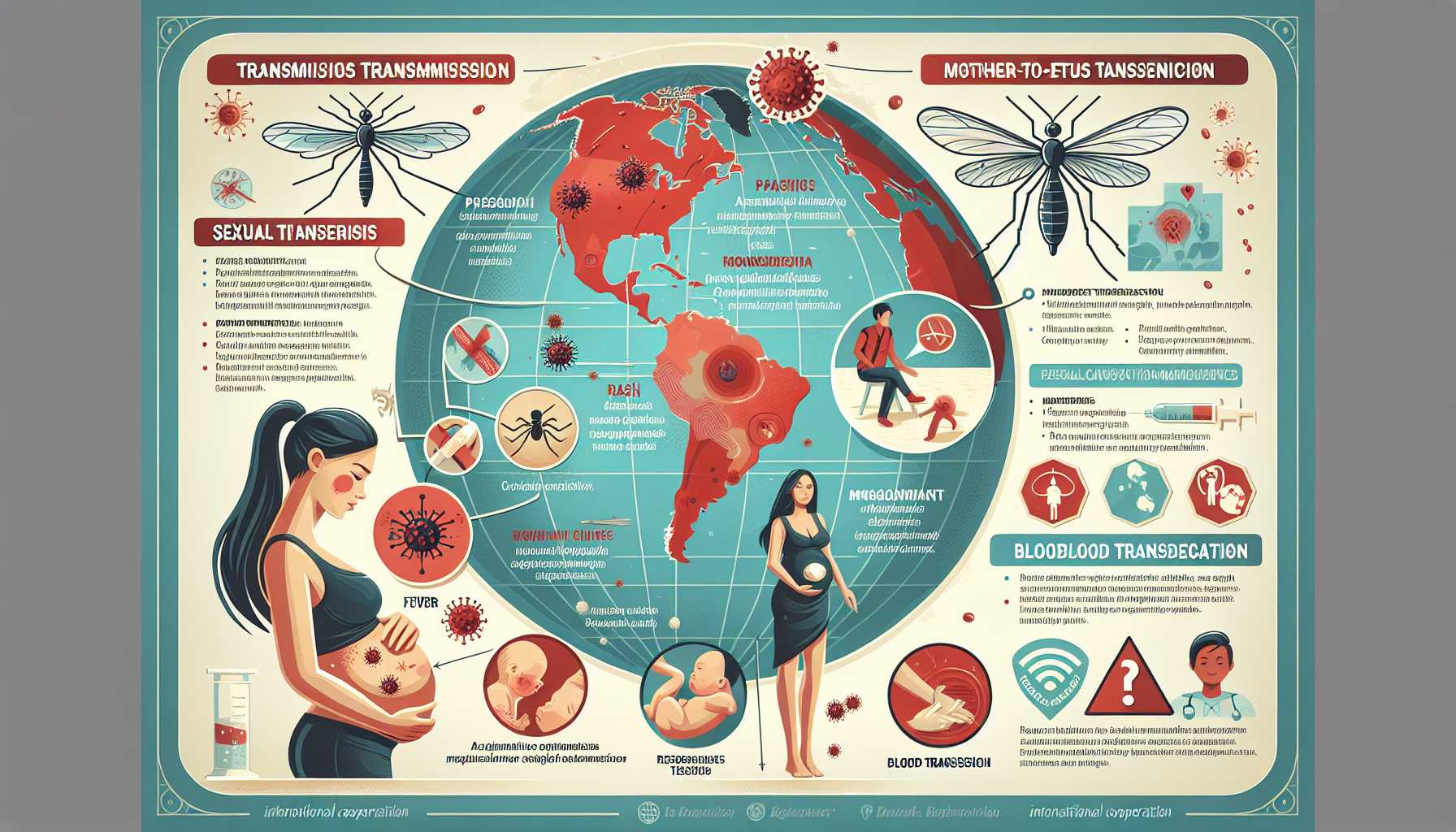
Zika Virus Overview Transmission Health Impacts and Prevention
The World Health Organization (WHO) fact sheet on Zika virus provides an overview of the virus, its transmission, and associated health impacts.
Sekai hoken kikan (WHO) no Jika uirusu ni kansuru fakuto shīto wa, uirusu no gaiyō, kansen keiro, oyobi kanren suru kenkō eikyō ni tsuite setsumei shiteimasu.
世界保健機関(WHO)のジカウイルスに関するファクトシートは、ウイルスの概要、感染経路、および関連する健康影響について説明しています。
Zika virus is primarily spread through the bite of infected Aedes mosquitoes, notably Aedes aegypti.
Jika uirusu wa, omoni kansenshita Ejido ka, tokuni Ejido Ejiputo ka no kōshō ni yotte hirogarimasu.
ジカウイルスは、主に感染したエジド蚊、特にエジドエジプト蚊の咬傷によって広がります。
It can also be transmitted through sexual contact, from mother to fetus during pregnancy, and through blood transfusions.
Sore wa, seikōi, ninshin-chū no hahaoya kara taiji e no kansen, oyobi yuke tsūji demo kansen suru koto ga arimasu.
それは、性行為、妊娠中の母親から胎児への感染、および輸血を通じても感染することがあります。
Widespread outbreaks have occurred in various regions, particularly in the Americas and the Pacific Islands.
Kōhan na ryūko ga samazama na chiiki, tokuni Amerika tairiku to Taiheiyō no shimajima de hassei shiteimasu.
広範な流行がさまざまな地域、特にアメリカ大陸と太平洋の島々で発生しています。
Zika virus infection often leads to mild symptoms, including fever, rash, joint pain, and conjunctivitis, and many infected individuals do not exhibit symptoms.
Jika uirusu kansen wa, shibashiba keido no shōjō o hikiokoshimasu. Kore ni wa, hatsunetsu, hasshin, kansetsu tsū, ketsumaku-en ga fukumare, ōku no kansensha wa shōjō o shimesanai koto mo arimasu.
ジカウイルス感染は、しばしば軽度の症状を引き起こします。これには、発熱、発疹、関節痛、結膜炎が含まれ、多くの感染者は症状を示さないこともあります。
However, significant concerns arise from the association between Zika virus infection during pregnancy and severe birth defects, such as microcephaly.
Shikashi, ninshin-chū no Jika uirusu kansen to jūdona sentensei kesson-shō, tatoeba shōtōshō tono kanren kara, ōkina shinen ga shōjimasu.
しかし、妊娠中のジカウイルス感染と重度の先天性欠損症、たとえば小頭症との関連から、大きな懸念が生じます。
The WHO emphasizes the importance of preventive measures, including mosquito control and personal protection, as well as the need for ongoing research and surveillance.
WHO wa, ka no seigyo ya kojin no hogo o fukumu yobōsaku no jūyōsei, sarani keizokuteki na kenkyū to kanshi no hitsuyōsei o kyōchō shiteimasu.
WHOは、蚊の制御や個人の保護を含む予防策の重要性、さらに継続的な研究と監視の必要性を強調しています。
Currently, there are no specific treatments or vaccines for Zika virus, making prevention crucial.
Genzai, Jika uirusu ni taisuru tokutei no chiryo-hō ya wakuchin wa naku, yobō ga jūyō desu.
現在、ジカウイルスに対する特定の治療法やワクチンはなく、予防が重要です。
The fact sheet highlights the need for international cooperation to monitor and respond to outbreaks, as well as public health strategies to manage the disease and protect vulnerable populations, particularly pregnant women.
Kono fakuto shīto wa, ryūko o kanshi shi ōtō suru tame no kokusai kyōryoku no hitsuyōsei, mata, shikkan o kanri shi, toku ni inpu nado no zeijaku na shūdankō ni hogo suru tame no kōshū eisei senryaku no hitsuyōsei o kyōchō shiteimasu.
このファクトシートは、流行を監視し応答するための国際協力の必要性、また、疾患を管理し、特に妊婦などの脆弱な集団を保護するための公衆衛生戦略の必要性を強調しています。
Based on this article
